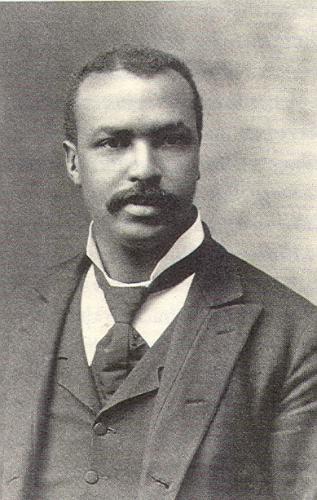Henry Hugh Proctor was an author, lecturer and a clergyman of the Congregational Church. Proctor was born on December 8, 1868, near Fayetteville, Tennessee to former slave parents Richard and Hannah (Murray) Proctor. Proctor attended local schools but was only able to take classes for three months out of the year, as he had to help his parents on their farm for the remaining months. After completing his schooling Proctor became a teacher at Pea Ridge, Tennessee and later at Fayetteville. Receiving his B.A. from Fisk University, Proctor dug ditches and preached sermons to pay for his degree.
In 1893 Proctor married Adeline L. Davis, a fellow student he had met at Fisk. The following year, he received a Bachelor of Divinity from Yale University, and in 1904, Clark University awarded him a doctorate in divinity.
In 1894, the same year he graduated from Yale, Proctor was ordained into the Congregational ministry and received an invitation to serve as pastor of the First Congregational Church in Atlanta, Georgia. In 1903, Proctor, along with George W. Henderson, president of Straight University in New Orleans, came together to found the National Convention of Congregational Workers Among Colored People. Proctor was nominated as the first president. The goal of this organization was to help black Congregational Churches in the South become self-sufficient, employ more of their own graduates, promote Congregationalism among African Americans, and strengthen the theological departments of American Missionary Association schools.
After the bloody Atlanta race riot in 1906, Proctor and a white attorney, Charles T. Hopkins, coalesced in the hopes of bringing peace between the races and quell remaining tensions. These men brought together twenty African American and twenty white men to form the Interracial Committee of Atlanta. Proctor was convinced that part of the cause of the riot-igniting racial tensions was the lack of recreational activities for African Americans in the city. Determined to fill this need, he used his church to provide such amenities as a library, a kindergarten, an employment bureau, a gymnasium, a ladies’ reading parlor, a music room, counseling services, and a model kitchen and sewing room for girls. He also helped open the first housing facility for young black women. In his autobiography Between Black and White, Proctor describes his dedication to the church, pronouncing, “I saw this building rise from the foundation to capstone, and much of my life is built into its very walls.” Proctor was a strong believer in self-improvement and wanted to give the African American community of Atlanta the tools for improving their lives.
In 1919, Proctor traveled to Europe, after a request of the War Department, to minister the African American troops serving there. Upon his return he was called to take charge of the Nazarene Congregational Church in Brooklyn. Proctor remained in Brooklyn the rest of his life. He died in 1933 of blood poisoning. Henry Hugh Proctor was survived by his widow and five of their six children. He is buried in Atlanta.


